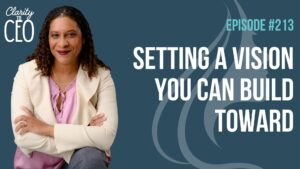We are now just weeks away from 2022. So much of how we connect and communicate with our audience has changed over the past 2 years and how we approach our marketing should be different as well. But what I want to know is, have you taken the necessary steps to map out your marketing plans and come up with marketing campaigns that will have the most significant impact on your business?
Is your small business ready to take on your marketing needs in the new year? If not, today we will teach you how to get ready and set yourself up for marketing success in the new year.
The Basics of Setting Marketing Goals
You see, selecting and committing to marketing goals are the foundation of an effective marketing plan. Marketing goals give direction to your overall marketing activities, pinpointing what should be marketed and to whom the messages should be directed. These marketing goals must be measurable, realistic, attainable, and time-sensitive in order to work.
More importantly, your marketing goals should be directly aligned with your overall business goals and objectives. So let’s actually start there first. If you haven’t created SMART Goals for your business, this is the first step in getting your small business marketing ready for 2022.
We recommend that you select no more than three SMART goals for your business. Trying to focus on too many things divides your attention, manpower, and resources. This division reduces the overall effectiveness of the results.
What are SMART goals?
But what exactly are SMART goals? A SMART goal is an acronym for goals that are Specific, Measurable, Achievable, Relevant, and Time-Bound.
Using this definition to craft your goals ensures that your specific objectives are attainable within a certain time frame and fulfill an actual need and not just an imagined desire. This method also eliminates generalities and guesswork, sets a clear timeline, and makes it easier to track progress. It also helps to identify when you are missing key milestones along the way to achieve your goals.
An example of a SMART-goal statement might look like this:
Our goal is to [quantifiable objective] by [timeframe or deadline]. [Key players or teams] will accomplish this goal by [what steps you’ll take to achieve the goal]. Accomplishing this goal will [result or benefit].
Your marketing goals should be set in a way that supports organizational growth and profitability through the achievement of customer satisfaction. You accomplish this by committing to solutions for specific problems or tasks while avoiding creating extraneous or unnecessary goals that distract from what is important.
How to Create Marketing Goals
Setting solid business goals is just the start of your marketing plan. Marketing plans are also not just about advertising your product or service. Marketing plans are about analyzing your company’s business model, identifying where it fits in the marketplace, and developing a strategy that will give you an edge in the competitive world.
To be effective, your marketing plan should be laser-focused. While we have developed three major business goals, your marketing efforts should focus on just one at a time. Trying to accomplish too many goals and divides your attention and resources. More importantly, if you try to do too much with your marketing at one time, it can cause confusion with your audience. The last thing we want to do is give our audience conflicting calls to action. So be sure to select only one of your overall business goals to focus your marketing on each quarter.
Your company’s marketing strategy may vary depending on your size, industry, and your competitors. But one thing is for sure is that your marketing goals should always be in complete support of your business goals. So how can you use marketing to achieve your business goals? How do we go from business goals to marketing goals? Here is one example I can provide.
Business Goal
We want to increase your overall sales in package A product by 15% by the end of the 2nd quarter of 2022.
Your marketing goal could be:
Create an effective funnel directed at your existing email base offering Package A Product as an upgrade to all customers who have already purchased Package B Product.
How to Align your Goals with Your Values & Beliefs
Another thing I want to mention today is about developing your marketing goals to support value or belief that is bigger than just gaining more revenue. I want you to something that can make a big impact on how your audience receives your offer is how well your brand is doing in demonstrating its values and beliefs. We are going to explore how to incorporate your values and beliefs into your marketing goals. Have you ever asked yourself, “How can I make my goals happen and in a meaningful way?” Well, this next section will teach you how to create the right mindset for success.
First, we will start with the importance of defining our values and beliefs. I think that aligning your marketing goals to your values and beliefs is important. It can help shape the value of your company and how it is perceived in many different ways. You might find yourself doing things that you never thought you would, like volunteering for charity work or raising money for victims of violence.
In order to start this process, you have to first determine, what does your brand value? How does your company express its value and beliefs? Do you offer a benefit or service to an underprivileged group that otherwise wouldn’t have access to these benefits? How are you giving back to the community?
You will want to analyze how these values fit into your overall goals. Do you see evidence of demonstrating your values as you make adjustments to pursue your goals? If not, what can you adjust to bring some synchronization between your goals and values?
When you find yourself going after something for a good cause, the drive and motivation shift, elevating the importance of reaching your goal. This is where you start to prioritize your brand voice and why it matters. You discover what you and your brand can do to make a difference while also succeeding as a company.
How to Set Your Success Metrics and What Constitutes a Successful Year
Alright, so far we have covered setting smart business goals, then we addressed creating marketing goals that align with and support your business goals, then we explored setting goals that demonstrate your brand’s values and beliefs. Now we will look at how to measure your success.
Based on the goals and main objectives for the year you must determine, your success metrics. This means, how are you going to measure your success. The metric used to measure will be largely based on the goal you are seeking to achieve. Determining this metric will help you to concentrate on what is important and show your progress towards the goal.
It is crucial to track your progress and adjust your metrics as needed. You can also use this to identify marketing opportunities that will increase the number of customers for your product.
Your metric measurement will considerably be related to the marketing goal you have established to focus on. Back to the example, I gave early.
We decided on a marketing goal of:
Create an effective funnel directed at your existing email base offering Package A Product as an upgrade to all customers who have already purchased Package B Product.
The metric measurement will be email open rates and email marketing conversions. You are tracking clicks from your emails to a checkout page with a final purchase. With this focus, other metrics like a reach on social media and conversions on your website of other products would be nice to know but not your primary measurement metric.
It’s time to get started!
There you have it.
We have covered:
The importance of setting SMART Business goals. We examined what it takes to make a goal a SMART goal. We covered creating marketing goals that lift up and bring you closer to meeting your business goals. We then addressed setting goals that represent your brands values and beliefs. And lastly how to measure your 2022 marketing goals.
There you have it, the blueprint you need to set some strong marketing goals for your small business in 2022. As a small business owner, you must make your marketing efforts in 2022 a priority. Doing this will pay off big time. If you start this process and get stuck or feel lack you need a boost in creativity, I suggest you schedule a 1-Hour Marketing Consultation appointment with our Content Marketing Strategist. We thrive on helping small business owners develop solid marketing plans and select the primary goal to focus all their marketing efforts on one quarter at a time.















